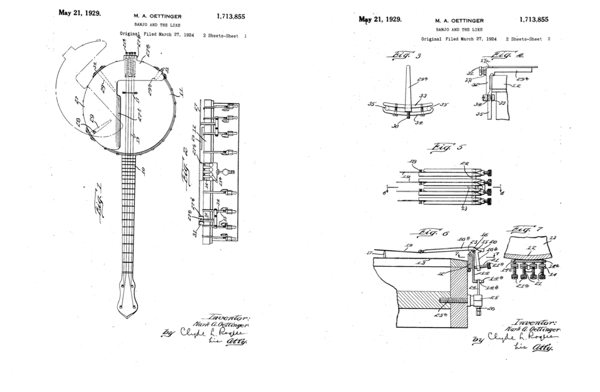History of the Oettinger Tailpiece
In the early 1920s, an American, Mark A. Oettinger invented a tailpiece that had individual 'fingers' that allowed a player to adjust the downward-pressure separately on each string. In 1924 he applied for a US Patent for his invention which was granted. It has the number US 1713855 which expired as long ago as 1946.
Interestingly, the description of the tailpiece seems to put forward its use more as a micro-tuner for the string rather than a means of adjusting downward pressure on the bridge. And almost as if Mark A. Oettinger was not sure his idea was 'different enough' he added in a swivelling arm rest that doubled up as a cover and protector for the tailpiece and even went further to suggest that the cover could serve as a resonator to increase the volume of sound.
He need not have worried about his invention, most Oettinger tailpiece owners agree nowadays, it's primary use is the adjustment of downward pressure of the strings on the bridge and subsequently balancing out the overall sound.
Click on image to see the original Oettinger US Patent application.
The Oettinger tailpiece became standard equipment on Bacon & Day Silver Bell, high end Vegaphone and other great jazz-age banjos of the 1920s. The original Oettingers, like the banjos they were fitted to, were mostly 4 string versions. But as Frederick Bacon was a classical banjo player, there were a few 5 string B & D banjos made, fitted, obviously with a 5 string Oettinger.
It's fair to say that the 'Oettinger' was a high-end piece of standard equipment and a sought after upgrade, right from the very beginning. Original Oettinger tailpieces can command prices upwards of $500 and many copies have been made over the years.

